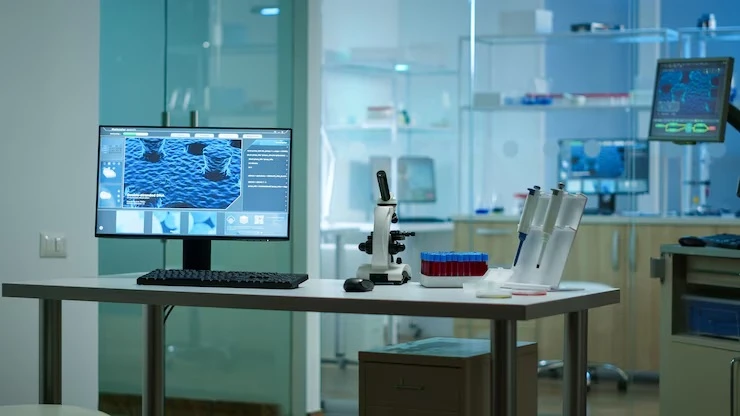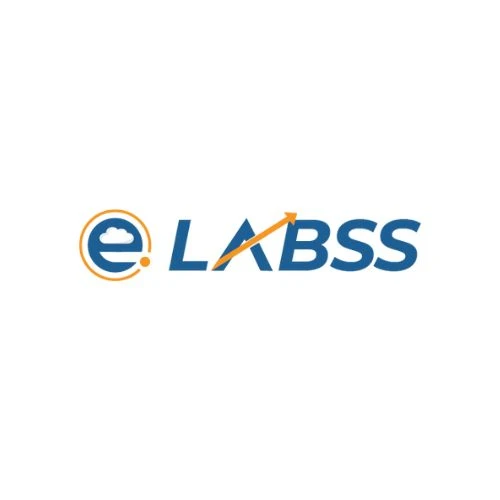In today’s fast-paced and data-driven scientific world, laboratories require more than just test tubes and lab coats—they need robust digital infrastructure to stay organized, efficient, and compliant. That’s where a Laboratory Information Management System (LIMS) comes in. But how exactly does a LIMS work?
In this step-by-step guide, we’ll explore the workflow, core features, and functional modules of a LIMS, and how it transforms laboratory operations. We'll also show how eLABSS LIMS is empowering laboratories with an integrated solution to streamline their complete lifecycle—from sample registration to result reporting.
What is a LIMS?
A Laboratory Information Management System (LIMS) is a software platform designed to manage the flow of samples, laboratory data, testing workflows, and reporting. It supports sample tracking, data collection, result entry, regulatory compliance, and more, all in one centralized digital system.
Whether you're a pharmaceutical lab, a diagnostic center, or an industrial testing facility, a LIMS helps automate and standardize daily lab operations while maintaining data integrity and audit trails.

Step-by-Step: How a LIMS Works in a Modern Laboratory
Let’s break down the typical LIMS workflow into 8 essential steps, each designed to digitize and optimize your lab operations.
1. User Access & Admin Setup
The first layer of a LIMS involves user authentication and admin rights management. Access control ensures that only authorized personnel can access specific features.
✅ eLABSS LIMS offers robust identity access control to manage roles, permissions, and data security—perfect for maintaining lab integrity and regulatory compliance.
2. Master Data Configuration
Before processing samples, the lab needs to configure its master data. This includes:
- Defining products
- Setting testing parameters
- Configuring workflows
- Setting instrument details
✅ With eLABSS LIMS, you can create and manage a Product Master to define all lab-specific configurations in advance, saving time and reducing errors during testing.
3. Sample Registration
Once the setup is complete, the lab staff can start registering samples into the LIMS. Each sample is assigned a unique identifier (like a barcode or QR code), enabling precise tracking across its lifecycle.
✅ eLABSS LIMS makes sample registration fast and simple. It allows for bulk uploads, real-time entry, and automatic ID generation, helping labs handle high sample volumes efficiently.
4. Test Allocation
Next comes test allocation, where specific tests are assigned to samples based on the configured product and lab protocols.
The system ensures:
- Proper test-to-sample linkage
- Avoidance of redundant testing
- Compliance with SOPs
✅ With eLABSS LIMS, you can automate test allocation rules based on sample type, testing batch, or lab priority—reducing manual decision-making and delays.
5. Workflow Execution & Data Entry
Once testing begins, lab technicians input test results or import them directly from instruments. LIMS facilitates:
- Manual or automated result entry
- Real-time data validation
- Integration with lab instruments
✅ eLABSS LIMS supports seamless data integration, minimizing human error and enabling real-time result capture for efficient analysis.
6. Quality Control & Review
LIMS supports a multi-tier review process that flags discrepancies and ensures the results go through quality assurance (QA) before final approval.
- Flagged values get routed for re-test
- Audit trails ensure accountability
- Digital signatures are captured
✅ eLABSS LIMS allows you to implement review and approval workflows that are fully auditable—ensuring regulatory compliance and data traceability.
7. Reporting & Certificate Generation
Once approved, test results are compiled into customizable reports or certificates of analysis (COA).
The system can automatically:
- Generate PDF reports
- Send results via email or system alerts
- Archive data for future access
✅ eLABSS LIMS provides flexible reporting functionality, allowing you to configure test reports by client, test type, or regulation, with built-in branding and digital certification.
8. Historical Data & Analytics
One of the most powerful features of a LIMS is its ability to offer long-term data storage, retrieval, and analytics. Labs can view trends, audit past activities, and optimize future workflows.
✅ eLABSS LIMS offers intelligent dashboards and historical data access for performance metrics, productivity analysis, and compliance auditing.

Why Choose eLABSS LIMS?
If you're looking to adopt or upgrade your lab’s information management system, eLABSS LIMS is a powerful solution built for scalability, flexibility, and real-world lab challenges.
✅ Key Features of eLABSS LIMS:
- Admin Management & Access Control
- Product Master Setup & Custom Workflows
- Automated Sample Registration & Test Allocation
- Integrated Data Entry & Instrument Interface
- Multi-level Approval & Quality Review
- Dynamic Reporting & COA Generation
- Secure Data Archival & Audit Trail Tracking
👉 Explore eLABSS LIMS – a comprehensive LIMS that simplifies operations and improves accuracy across your lab.
Benefits of Using a LIMS in Your Laboratory
Here are some of the core advantages of using a LIMS like eLABSS:
- Enhanced Efficiency – Automate manual workflows, reduce turnaround time.
- Improved Data Accuracy – Eliminate transcription errors and inconsistent data.
- Regulatory Compliance – Maintain audit trails, digital signatures, and secure access.
- Centralized Data Access – Get anytime access to sample and test data.
- Better Collaboration – Share information across teams, departments, or locations.
Conclusion
A Laboratory Information Management System is no longer a luxury—it’s a necessity for labs that demand speed, accuracy, and compliance. From sample intake to final report delivery, a LIMS optimizes the entire lab workflow.
Whether you're managing a research lab, quality control unit, or diagnostic center, eLABSS LIMS is the ideal partner to help you scale operations while ensuring precision and control.
🔬 Ready to streamline your lab with digital efficiency?
👉 Visit https://elabss.ai/lims/ to learn more or request a demo.


